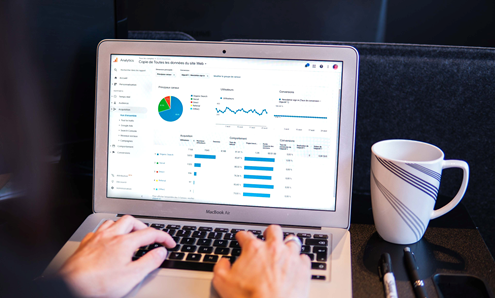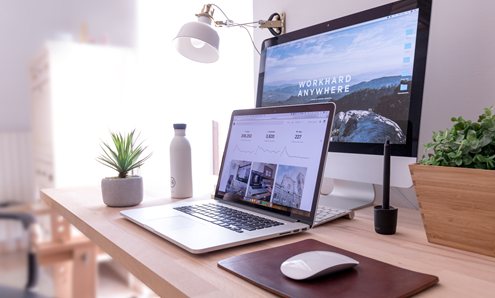What are business assets? A simple guide for businesses
08 September 2023 | Published by Jodie Wilkinson
Whether you realise it or not, every business needs assets to operate. And when you’re starting a business, one of the most important decisions you can make is what assets your company should hold.
But, getting your head around the different types of assets and how to account for them can be difficult. Find out more about the specifics around business assets — including their various forms — and how valuable they really can be to small businesses.
What is a business asset?
A business or company asset is a tangible or intangible item that is of value to a business. This can include everything from equipment, physical cash, investments, buildings and even intellectual property owned by a business or intended primarily for business use. Essentially, an asset is anything that can be used to produce goods or services or fund operations.
How do business assets work?
Assets contribute to the bigger picture of your business's worth. And because of this, you’ll see them on the balance sheet — a financial statement that reports a company’s assets, liabilities and shareholder equity at a specific point in time — on your annual report.
What are the different types of assets?
There is a wide range of different asset categories that can sometimes be hard to wrap your head around. Some of the most common business assets you’ll find include:
Current assets
A current asset is any asset you expect to use within the next 12 months and can be easily converted into cash.
Current assets examples can be anything from:
- Stock and inventory
- Cheques
- Accounts receivable (what you’re owed for products or services that have already been delivered)
- Bank drafts
- Short-term investments
- Prepaid expenses (these are any goods and services that have already been paid for that will be received in the future)
Fixed assets
A fixed asset is an asset that has value over more than a year and can’t be converted into cash as easily.
Usually, fixed assets depreciate in value over time, and this should be accounted for on the balance sheet.
A fixed asset can be:
- Property
- Equipment
- Tools and machinery
- Long-term investments
- Leasehold improvements
- Facilities and infrastructure
What’s the difference between a tangible and intangible asset?
When discussing assets, you may hear people refer to some as ‘tangible’ or ‘intangible’. The primary difference between tangible and intangible assets lies in their physical presence and how they create value for a company.
Tangible assets
In simple terms, a tangible asset is a physical asset that can be seen and touched. These include:
- Buildings
- Machinery
- Vehicles
- Furniture
- Cash
- Land
- Inventory
Tangible assets can depreciate over time to reflect their wear and tear, or their value may increase based on market conditions. For example, if you own a brick-and-mortar store like a restaurant or hairdressers, the value of your premises may fluctuate in line with property prices. They can also be sold to raise capital if needed. Tangible assets are typically easier to value because they often have a market price or can be valued based on physical characteristics and usefulness.
Intangible assets
On the other hand, an intangible asset lacks physical presence but still has clear business value. These can include:
- Patents
- Trademarks
- Copyrights
- Brand names
- Trade secrets
- Goodwill
- Intellectual property
- Licenses
These assets can provide a long-term financial benefit: for instance, a patent can secure exclusive rights to a product or process for a number of years.
Because intangible assets are not physical, they don’t depreciate in the traditional sense, although their value can be gradually written off over time. Valuing intangible assets can be complex because it often involves estimates and assumptions, and there isn't always a clear market price.
How are tangible assets valuable to a business?
Today, it would be extremely difficult, or even impossible, to run a business without having any tangible assets. However, they offer a multitude of advantages, empowering businesses to thrive and excel in various ways:
- Revenue generation — Tangible assets, such as equipment, machinery, or inventory, serve as the backbone of production processes, enabling businesses to create and deliver goods or services. By leveraging these assets effectively, companies can generate revenue and bolster their financial performance.
- Operational efficiency — Possessing tangible assets that are optimised for efficiency, such as state-of-the-art production equipment or integrated point of sale systems, can enhance operational processes. This leads to improved productivity, cost reduction, and optimal resource allocation, ultimately boosting overall efficiency.
- Infrastructure establishment — Tangible assets, including office buildings, factories, or retail spaces, provide the physical infrastructure required for businesses to operate smoothly. These assets create a professional environment for employees, facilitate customer interaction, and enable the efficient delivery of products or services.
- Facilitating financing — Tangible assets hold significant value and can be used as collateral to secure financing or loans. Lenders often perceive tangible assets as tangible security, making it easier for businesses to access funds for expansion, investment, or meeting financial obligations.
- Enabling growth and expansion — Whether it involves scaling up operations or venturing into new markets, additional machinery, equipment, or facilities, tangible assets play a crucial role in supporting business growth and expansion initiatives.
How do businesses acquire assets?
Depending on a business's specific needs and its financial capabilities, companies can acquire assets through various methods:
- Purchasing — Businesses can directly purchase assets from suppliers or vendors. This involves researching the desired asset, comparing prices and quality, and negotiating the purchase terms. The business then pays the agreed-upon price and takes ownership of the asset.
- Leasing — Instead of buying assets outright, businesses can lease them. Leasing allows businesses to use assets for a specific period while making regular lease payments. This approach is useful for temporary asset needs or when avoiding large upfront costs. At the end of the lease, businesses may have the option to renew, return, or purchase the asset.
- Construction and development — Businesses may acquire assets by constructing or developing them. They acquire land, obtain permits, and undertake construction or development to create assets aligned with their specific requirements.
- Gifts and donations — Companies may acquire assets as gifts or through donations from individuals, organisations, or government entities. These assets can include equipment, vehicles, property, or other valuable items. While less common, such acquisitions offer cost savings and support from the donor.
- Intangible assets — In addition to tangible assets, businesses can acquire intangible assets like intellectual property through creation or development. This involves research and development efforts, creative endeavours, or strategic partnerships to generate patents, trademarks, copyrights, or other intangible assets.
Are business assets subject to depreciation or amortisation?
Tangible assets are generally subject to depreciation, which involves allocating their cost over their estimated useful life. Depreciation reduces the asset's value on the balance sheet and affects the company's net income and taxable income.
Intangible assets may be subject to amortisation, which is similar to depreciation but applies to assets with finite useful lives. Depreciation and amortisation expenses impact a company's financial statements by reducing reported net income.
How can businesses protect assets from loss, theft or damage?
Businesses can protect their assets by implementing comprehensive measures such as robust security systems, insurance coverage, and regular maintenance routines.
Physical assets should be safeguarded with locks, alarms, and video surveillance, while data protection measures should be implemented for intangible assets. Adequate insurance coverage helps mitigate risks, while proactive maintenance and risk management practices minimise potential damage or loss.
Get in touch with takepayments today
Business assets are a vital component of the everyday runnings of your business, and so are card machines. Whether you decide to opt for portable, countertop or mobile devices, our card machines for small businesses can help make payments more manageable.
To find out more about any of our payment solutions, or discuss your options in more detail, contact our dedicated experts today! Or, check out our blog to learn more about takepayments' technology.





